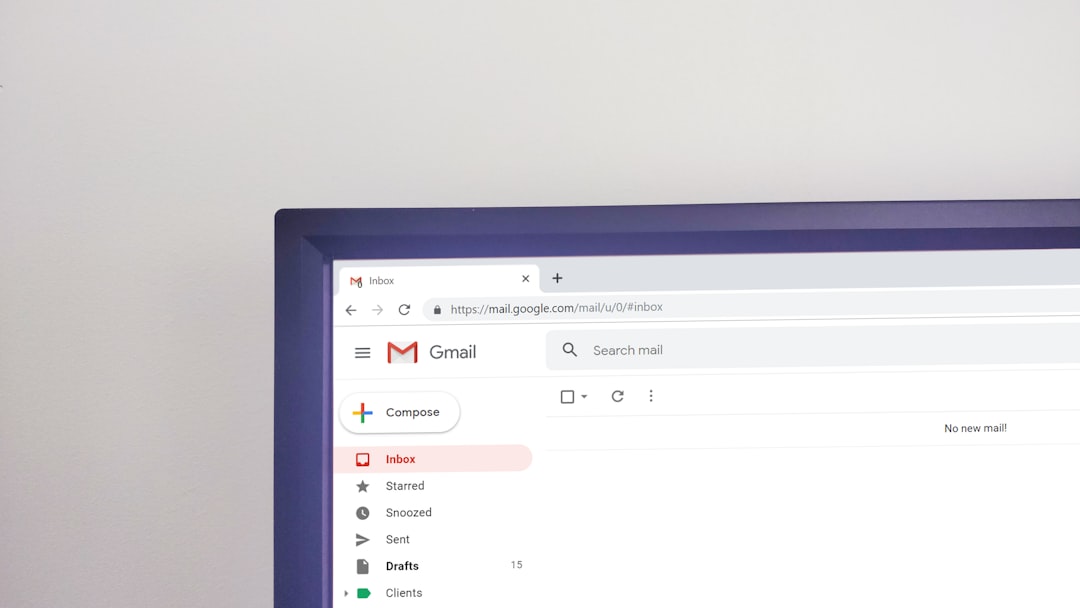Table of Contents
- Introduction
- Segmenting your audience for personalized messaging
- Crafting compelling subject lines to increase open rates
- Developing engaging content that speaks to lead interests
- Utilizing automation to time emails perfectly
- A/B testing email variations to optimize performance
- Incorporating clear CTAs to drive action
- Using analytics to refine your campaign strategy
- Building trust through consistent and valuable communication
- Conclusion
- Frequently Asked Questions
Introduction
Imagine this: A perfectly targeted email appears in your inbox just as you’re contemplating a purchase or considering a service. It’s like the sender knew exactly what you needed. This isn’t magic—it’s the power of an expertly crafted email drip campaign. Welcome to the world where businesses unlock the mysterious art of nurturing leads through precision, strategy, and the right tools.
In this article, we delve into the secrets behind successful email drip campaigns that are designed to skyrocket your lead nurturing processes. Whether you’re seasoned in the field or just starting, understanding these tactics will give you the insights needed to revolutionize your email marketing strategy.
| Tactic | Benefit |
|---|---|
| Personalization | Increases engagement rates |
| Segmentation | Ensures relevant content delivery |
| Automation | Saves time and maintains consistency |
Ready to unravel these proven strategies and take your business communications to the next level? Let’s dive into the world of email drip campaigns that transform curious prospects into delighted customers.
Segmenting your audience for personalized messaging
Segmenting your audience for personalized messaging is a critical tactic in nurturing leads through email drip campaigns. By dividing your audience into distinct groups based on specific criteria such as demographics, behavior, interests, or buying history, you can tailor your communication to better meet the needs and preferences of each segment. This approach not only ensures that your messages are relevant and engaging but also significantly improves open and click-through rates.
For instance, you might create different segments for new subscribers, those who have shown an interest in a specific product, or returning customers. By understanding the unique characteristics and stages in the purchasing journey of each segment, you can deliver targeted content that guides them further down the sales funnel. Personalized messaging fosters a sense of connection and increases the likelihood of conversion, as recipients feel understood and valued.
Moreover, advanced segmentation can include predictive data analytics to anticipate future behavior, allowing you to proactively address potential needs with timely and relevant content. Ultimately, segmenting your audience for personalized messaging empowers your email drip campaigns to nurture leads more effectively, transforming prospects into loyal customers.
Crafting compelling subject lines to increase open rates
Crafting compelling subject lines is a critical tactic in increasing open rates for email drip campaigns. The subject line serves as the first impression, and it can significantly influence whether a recipient decides to open the email. To start, it’s essential to keep the subject line concise and to the point, usually no more than 9 words or 60 characters, as this ensures it is displayed fully on various devices, especially mobile.
Personalization is another powerful tool; including the recipient’s name or tailoring the subject line to specific interests can make the email more appealing. A sense of urgency or exclusivity can also encourage opens, using phrases like ‘Limited Time Offer’ or ‘Exclusive Access’ to pique interest. Moreover, it’s beneficial to stimulate curiosity by presenting intriguing questions or teasers that make the recipient eager to learn more.
Testing and analyzing subject lines are also necessary to understand what resonates with your audience. A/B testing different approaches allows marketers to refine their strategies based on data-driven insights. Remember, the ultimate goal is to create a subject line that not only captures attention but also aligns with the content of the email, ensuring a cohesive and satisfying reader experience.
Developing engaging content that speaks to lead interests
Developing engaging content for email drip campaigns involves creating messages that resonate with your leads’ specific interests and needs. Understanding your audience is critical, so start with segmenting your email list based on behavior, demographics, or purchase history. This allows you to tailor your content more accurately. Each email should provide value, whether it’s through educational material, special offers, or industry insights, ensuring that every piece of content is relevant to the recipient.
Personalization is another key tactic. Addressing your leads by name and referring to past interactions or preferences can significantly increase engagement rates. Coupling personalized greetings with a conversational tone helps to forge a connection and encourages interaction.
Moreover, incorporating visually appealing elements such as images, infographics, or videos can enhance the overall engagement level. These elements not only break up text but also provide an engaging way to convey information quickly.
Lastly, having a clear call-to-action (CTA) in each email guides the lead through the sales funnel seamlessly. Whether it’s encouraging them to download a resource, sign up for a webinar, or contact a sales representative, each email should aim to move them one step closer to conversion.
Utilizing automation to time emails perfectly
In the realm of email marketing, utilizing automation to time emails perfectly can be a game-changer for businesses looking to nurture their leads. Automation allows marketers to send emails at optimal times, ensuring that messages reach recipients when they are most likely to engage. This not only maximizes the chances of the email being opened but also enhances the likelihood of conversion.
To achieve this, it’s crucial to study and analyze recipient behavior and time zones. By understanding when your audience is most active, you can schedule emails to align with these periods, enhancing visibility and engagement. Automation platforms offer features such as segmentation and scheduling, allowing for personalized and timely communication. This personalized approach ensures that every email feels relevant and valued by the recipient.
Moreover, leveraging A/B testing can further refine the timing strategy. By experimenting with different send times and monitoring the results, marketers can identify the most effective times for engagement. Overall, employing automation not only streamlines the email marketing process but also enhances the overall customer experience, driving better results and fostering strong customer relationships.
A/B testing email variations to optimize performance
A/B testing, also known as split testing, is a powerful strategy for optimizing the performance of email drip campaigns by comparing two variations of an email to see which one performs better. This tactic allows marketers to test different elements such as subject lines, content, call-to-action buttons, and images. For example, one group of recipients might receive an email with a simple “Buy Now” CTA, while another group receives an email with a more detailed “Learn More” button.
By analyzing key metrics such as open rates, click-through rates, and conversions, marketers can gain insights into what resonates most with their audience. This data-driven approach enables continuous improvement of email strategies, enhancing engagement and lead nurturing processes. It is crucial to only change one element at a time to accurately determine its impact on performance.
Furthermore, A/B testing helps in tailoring content more accurately to specific segments of the audience, providing a personalized experience. Over time, this leads to improved customer trust and higher conversion rates. To ensure successful A/B testing, it is advisable to run tests over a period sufficient to gather statistically significant data, ensuring the results are reliable and actionable.
Incorporating clear CTAs to drive action
Incorporating clear and compelling calls-to-action (CTAs) in email drip campaigns is crucial for nurturing leads effectively. A well-designed CTA not only captures the recipient’s attention but also guides them towards the desired action, whether it’s signing up for a webinar, downloading a resource, or making a purchase. The key to a successful CTA lies in its simplicity and relevance. It should be concise, action-oriented, and strategically placed within your email content to enhance visibility.
Using action verbs such as ‘download’, ‘register’, or ‘explore’ can encourage immediate engagement. Additionally, personalizing CTAs to resonate with the recipient’s needs or interests can significantly increase conversion rates. For example, instead of a generic ‘Learn More’, try ‘Discover How Our Solution Solves Your Challenges’. Furthermore, incorporating urgency by adding phrases like ‘limited time offer’ can prompt quicker responses from potential leads.
Lastly, ensure that your CTAs lead to landing pages that seamlessly continue the conversation started in the email. Consistency between the email message and landing page content reinforces trust and guides the lead further along the sales funnel, ultimately enhancing the effectiveness of your email drip campaign.
Using analytics to refine your campaign strategy
Using analytics to refine your campaign strategy is crucial in ensuring the success of your email drip campaigns. By leveraging data, you can gain insights into how well your emails are performing and identify areas for improvement. One of the key metrics to monitor is the open rate, which indicates how many recipients opened your email. This can highlight the effectiveness of your subject lines and help you tweak them for better engagement.
Another important metric is the click-through rate, which shows how many recipients clicked on the links within your emails. A low click-through rate may suggest that your call-to-action is not compelling enough, prompting you to experiment with different wording or placement of your links. Moreover, tracking unsubscribe rates can also provide valuable information, revealing whether your content is resonating with your audience or if it needs adjustment.
Additionally, segmenting your audience based on their behavior and preferences ensures that your emails are relevant and personalized, thus increasing the likelihood of conversion. By continuously analyzing and interpreting these metrics, you can fine-tune your strategy and ultimately nurture leads more effectively through your email drip campaigns.
Building trust through consistent and valuable communication
Building trust through consistent and valuable communication is a pivotal aspect of effectively nurturing leads through email drip campaigns. The key lies in delivering relevant content that resonates with your audience’s needs and interests. Start by segmenting your email list to ensure each recipient receives information that is directly applicable to them. Tailored content creates an impression of personalization, making your subscribers feel valued. Consistency in your communication schedule is equally important. Establishing a predictable pattern, such as weekly emails, helps in setting expectations, reassuring your audience that your communication is reliable and timely.
Valuable content remains the cornerstone of trust-building. Offer insights, tips, and resources that genuinely aid your audience. This establishes your authority in your field and demonstrates that you have their best interests at heart. Incorporate storytelling to make your messages relatable and engaging, fostering a deeper connection. Additionally, ensure that your emails are visually appealing and easy to read, with clear calls-to-action that guide your prospects on the next steps to take. By focusing on consistent delivery of meaningful and helpful information, you can gradually build trust, transform leads into loyal customers, and foster long-term relationships.
Conclusion
In conclusion, mastering the art of email drip campaigns is pivotal for skyrocketing lead nurturing success. By strategically segmenting your audience, you can deliver personalized messages that resonate with specific needs and preferences, fostering deeper connections and enhancing conversion rates. Compelling subject lines and engaging content are essential components, driving open and engagement rates. Automation streamlines this process, ensuring timely delivery that synchronizes with your leads’ activity patterns.
Additionally, conducting A/B testing and refining strategies based on analytics empower marketers to continuously optimize campaigns for superior performance. Clear and persuasive CTAs guide recipients further down the funnel, whereas consistent, valuable communication builds trust and brand loyalty. Remember, the goal is not just to convert leads but to cultivate lasting relationships. By embracing these proven tactics, businesses can unlock the full potential of email drip campaigns, transforming prospects into devoted customers and achieving unparalleled marketing success.














